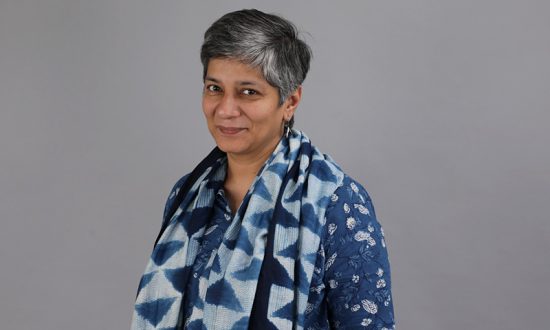Aarti is the Course Leader for Communication Design at IIAD. She is a multi-disciplinary design practitioner with over two decades experience in the area of product and graphic design as a consultant, academician and entrepreneur. Aarti is a postgraduate in Visual Communication Design as a Graphic Design major from Massey University, New Zealand, and an Accessory Design graduate from NIFT, Delhi. She holds a Postgraduate Certificate in Higher Education (PGCHE) from Nottingham Trent University.
With the advancement of technology and deconstruction of barriers to work, there are limitless professional opportunities today that allow one to unleash one’s creativity. In today’s age, with remote working becoming the norm, employers are focusing on the quality of output rather than being physically present in the workplace, and digital avenues have become increasingly popular.
One of these streams, and among the most attractive, is web design. Not only is the profession at the forefront of the modern digital world, but it is also one of the fastest-growing fields at the intersection of creativity, tech, and customer experience. Every firm – big or small, and irrespective of the industry it belongs to – needs an internet presence in the form of a website to put forth its values and key propositions.
With the demand for high-quality websites increasing with every passing day, the function of a web designer is sought-after increasingly.
What is Web Design?
Web design involves creating a website that includes the creative aspects – the content and the design. The work of a web designer is to define the appearance and layout of the website. While content is also deeply interlinked, not all web designers have control on content creation and rely on content writers for the same.
This role usually refers to the user experience part of the website development rather than the software/coding. For instance, a web designer decides the colours, images, page structure and fonts used on the website to ensure the visual appeal and sleek user experience, ensuring high-impact of the content used.
Careers in Web Design
Careers in web design are not limited to simply ‘web designer’. By pursuing related programmes and gaining skills in parallel domains, you can work as a UI designer, UX designer, graphic designer, information architect, design researcher or tester, social media designer and even interaction designer, among others. While some of these are more lucrative than the others, it is well-known that the tech-focused roles garner bigger payouts due to higher-level skills and demand.
Skills Needed as a Web Designer
As a web designer, one needs to be as adept at tech as at the non-tech features of building a website. To understand this better, some of the most critical skills needed to become a skilled web designer.
- Visual Design: While it’s implied that a ‘designer’ has the requisite design knowledge, you need to be more skilled at visual design suited for digital products. Therefore, you should be proficient at creating mood-boards, proportions, design grids, etc., and have a clear visual design foundation.
- User Experience Design: Generally known as UX, this is not the same as the customarily used phrase, ‘graphic design’. A successful web designer empathises, evaluates and comprehends the mindset of his audience and inculcates it into the design. He approaches the design from a user-first perspective, builds and tests user flows and designs wireframes to ensure the experience is seamless.
- Client handling: One of the most crucial soft skills to possess as a web designer is proficient as client management. As a designer, you are likely to handle multiple clients and projects simultaneously. To be able to manage your clients and be conscious of the budgetary expectations and workflow will definitely build your reputation as a professional.
This is in no way an exhaustive list of skills needed to pursue a career in web design. With endless technological capabilities, you can equip yourself with (think the entire Adobe suite and other multimedia editing software), there are also softer skills like time management and communication that help in advancing your career as a web designer.
While there are dedicated courses on web design, both full-time and part-time, students of multi-disciplinary programmes like communication design are also equipped with advanced web design skills as a part of their curriculum.
The web design industry has continually seen accelerated growth in the past few years with the boom in digital penetration and demand for mobile-responsive websites. There are extensive opportunities for career advancement in the field as an independent professional as well as a part of an organisation.
If you love playing with visual elements and have a creative mindset, the ability to learn technology swiftly and eagerness to work with clients from across different genres, web design is definitely a career worth exploring.




